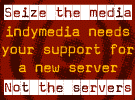Abolishing emergency rule has been a key demand of protests, which erupted nearly two weeks ago and in which more than 60 people have been killed, drawing international condemnation. But the government-organised show of mass support suggested Assad was seeking to address his people from a position of strength, adopting a strategy to counter unrest that was once unthinkable in this most tightly controlled of Arab states.
Protesters at first had limited their demands to greater freedoms. But, increasingly incensed by a security crackdown on them, especially in the southern city of Deraa where protests first erupted, they later demanded the "downfall of the regime." The calls echo those heard during recent Arab uprisings that have toppled autocratic presidents in Tunisia and Egypt and also motivated rebels fighting Libyan leader Muammar Gaddafi. U.S. Secretary of State Hillary Clinton condemned what she called "the Syrian government's brutal repression of demonstrators, in particular the violence and killing of civilians in the hands of security forces" in recent protests. State television showed people in the Syrian capital Damascus and cities including Aleppo, Hama, Homs and Tartus waving the national flag and pictures of Assad and chanting "God, Syria, Bashar" in what were dubbed "Loyalty Marches."
"Breaking News: the conspiracy has failed!" declared one banner, referring to government accusations that foreign elements and armed gangs are behind the unrest. "With our blood and our souls we protect our national unity," another said.

 Homepage:
Homepage:
